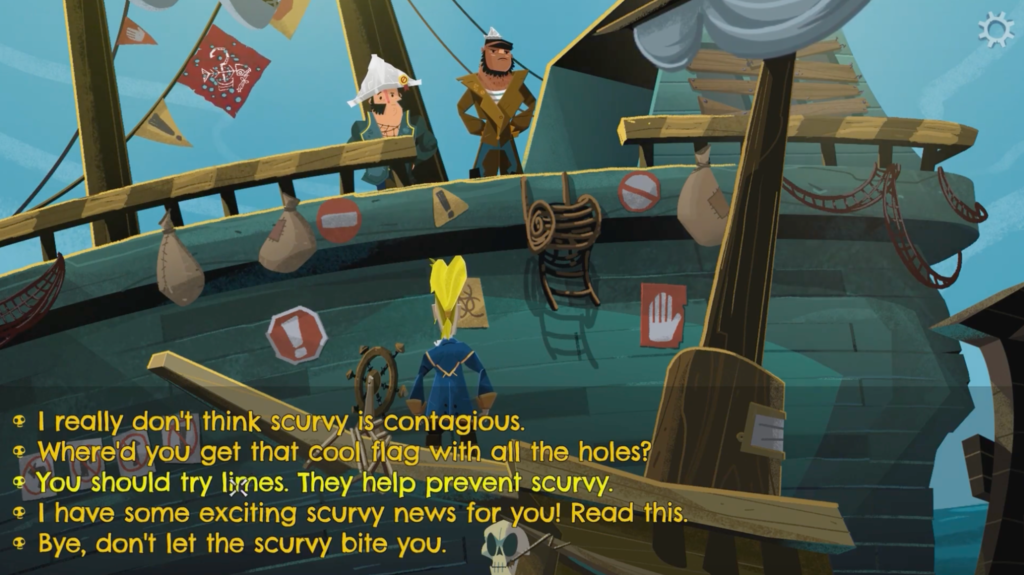I saw a post from Kent Beck (author of Extreme programming explained, Tidy first, and lots more) on LinkedIn:
Iodine was isolated in 1811. In 1813, iodine deficiency was proposed as the cause of thyroid problems like goiters. In 1954 the last canton in Switzerland (where iodine was especially scarce because glaciers) mandated iodized salt. 19. 54. Not 18. 19.
How’s uptake of my ideas going? Fine. Just fine.
I thought this was a great example of how long it can take for useful ideas to get adopted, and it made me think of another example. I started replying in a comment and it got too long … so here’s a blog post instead.
Adoption of citrus fruits
The Wikipedia article on the history of scurvy is an eye-opening read. Scurvy was a serious problem for centuries; millions of sailors died because long voyages meant they didn’t have enough vitamin C.
The way to avoid it – eating citrus fruits or other sources of vitamin C – was discovered by various groups around the world over a long stretch. A Portuguese account knew about it in 1497, and it was very likely known by some even earlier than that. Comms were difficult in the old days, so it’s understandable this precaution wasn’t widespread then.
However, it was 1601 when a British captain experimented and gained certainty that citrus fruits prevented scurvy – and it took until 1795 for the British Navy to start adopting this and move towards providing daily lemon juice rations on all ships. Almost two centuries, with lots of deaths, lots of urgency to avoid it, and lots more experiments and examples of citrus helping. Why was the gap so long?
The Wikipedia page describes lots of reasons for it not catching on – including that theories of medicine at the time didn’t understand why citrus fruits would do any good, so they dismissed the evidence. “Literature championing the cause of citrus juice, therefore, had no practical impact.”
I’ve recently played Return to Monkey Island, where one subplot involves an important flyer detailing how limes prevent scurvy. Nobody will act on the factual science-based version, so you need to get marketing and content advice to turn the flyer into something people will pay attention to. I had no idea this plot point had a real-world parallel.

Anything we could learn from this?
There are lots more medical examples – I wondered if there’s anything I could learn from how they’ve looked at solving this challenge. Just to be clear, on the topic of the uptake of Kent Beck’s ideas – him and thousands of others have put decades of work into finding ways to get them taken up. I don’t expect to discover anything they’ve missed in this quick read from me! These notes are just for my own learning.
I’m a bit cautious about trying assuming learnings from medicine and other fields will apply exactly to software teams – like professional sports or combat units, it’s important to remember their context is quite a bit different from most business situations. But if we keep that caveat in mind, it can be interesting to learn what other fields have done about problems that sound similar to what we’re facing.
I found this report an good read: The spread challenge. It uses the scurvy case as one example of how long it can take for an important, demonstrably life-saving intervention to spread widely, and has lots more case studies, overviews, and recommendations.

This is called the “replicability problem” – “the challenge of replicating the impact of a new intervention as well as its external form”. I definitely recognize that situation – you can get teams and companies doing things that look like the good practices that brought such success to some places, without getting any of the benefits. In the British National Health Service (NHS), they have all kinds of abilities to encourage or mandate changes… “But the last 70 years of NHS history have shown that mandating action does not automatically bring about the desired change in outcomes.”
This sounds familiar! It goes on to discuss, with examples, the things that need to be in place to make the changes useful: staff able to adapt the new intervention to their own context, learn new skills, change relationships and undo entrenched habits. An interesting idea is the tension between “tight” and “loose” specification of the intervention:
- “Tightening” the requirements can describe and specify the intervention in more and more prescriptive detail, adding to the chance it’s done correctly and important factors aren’t missed … but leaving less room for people to feel ownership or adapt to local contexts.
- “Loosening” the requirements can allow more creativity and chances of making it work in more places … but might mean important aspects are dropped before they’re understood, or people feeling daunted by the lack of clear guidance.
It’s a tricky balance, and the report references “the Iron Law” from Peter Rossi: “as a new initiative is implemented across more and more settings, the impact will tend toward zero.”
Some more advice: “Most obviously, it matters that adopters want to implement a new idea and are committed to doing so, particularly with complex interventions that may necessitate behaviour change from those involved.”
I’m reminded of an old joke: How many coaches does it take to change a lightbulb? Only one, but the bulb has to want to change.
Overall recommendations, if you want new interventions to be adopted and bring benefits:
- Understand thinking on how complex systems are changed. They recommend reading up on “realist evaluation” or “complex adaptive systems theory”.
- As an intervention gets adopted more widely, expect to learn lots from the adopters and how they apply it in their contexts. This isn’t “a good idea has been created, just adopt it” – there’s creative work and lots of learning, sharing and rethinking to be done.
- Give support to the adopters: they’ll need time and headspace to take on new practices, assistance with data and evaluation (is the change helping, beyond “how it feels”?), and a way to share learning with peers.
Lots of people in lots of fields have wrestled with this “replicability problem” – there’s stacks of further reading suggestions in this report. I’ll come back to those.